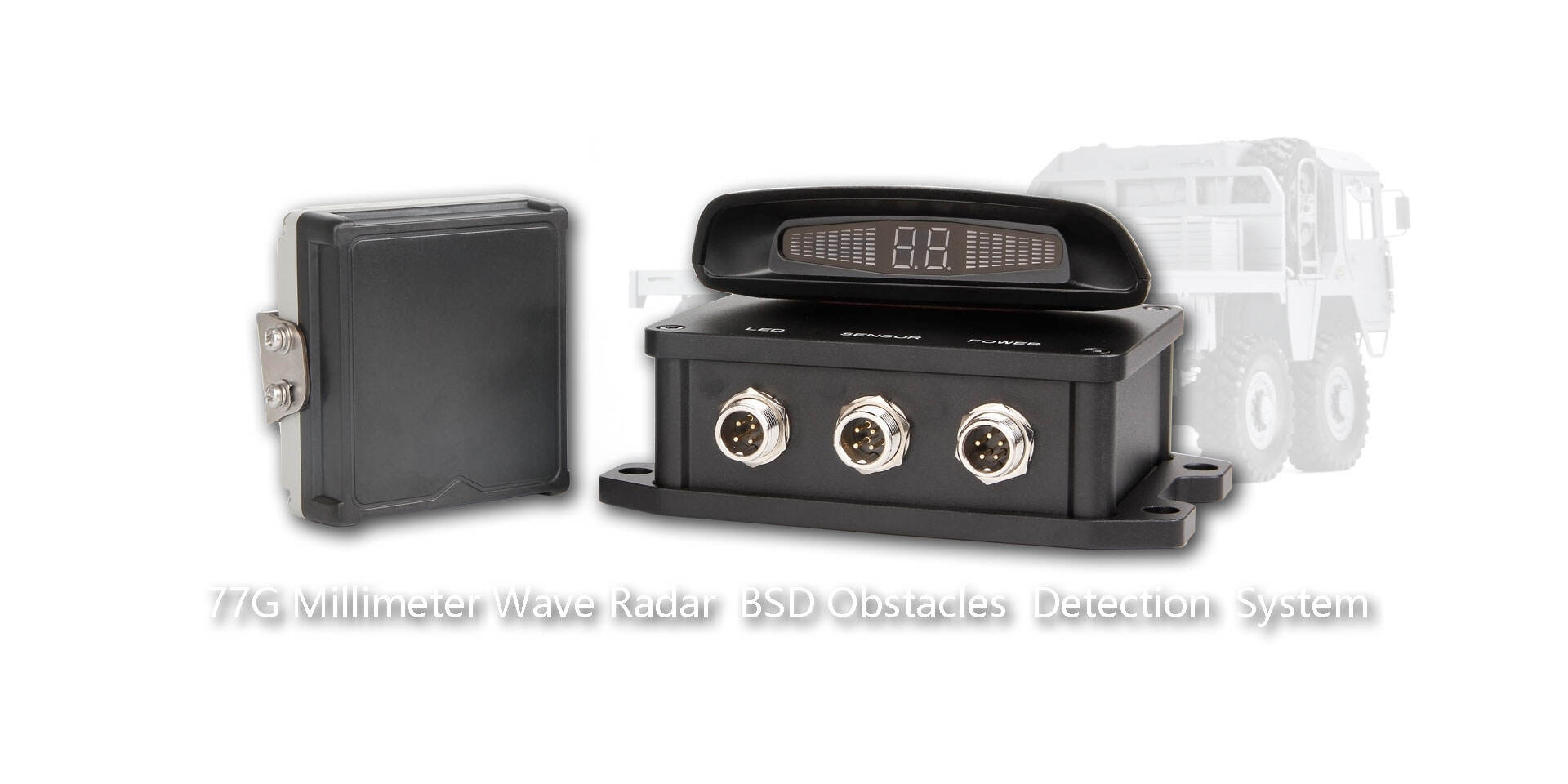77GHz milimetre dalga radarın geriye doğru ve kör nokta izleme (BSD) uyarı sistemlerindeki uygulamaları
77GHz milimetre dalga radarı, geriye doğru hareket etme ve körlük noktası izleme (BSD) uyarılarında önemli uygulamaları vardır.
Öncelikle, geriye doğru hareket etme uygulaması
Doğru mesafe ölçümü:
77GHz milimetre dalga radarı, araçın arkası ile engeller arasındaki mesafeyi doğru bir şekilde ölçer. Geriye doğru hareket ederken, sürücüye araç ile arka nesne arasındaki mesafe bilgisi gerçek zamanlı olarak sağlanır ki bu da sürücünün geriye doğru hareket etme güvenli mesafesini daha iyi değerlendirmesine yardımcı olur.
Geleneksel ultrasonik sensörlerle karşılaştırıldığında, milimetre dalga radarı daha uzun menzille ve daha yüksek doğrulukla çalışır ve uzaktaki engelleri algılayabilir; bu da sürücülere daha yeterli tepki süresi sağlar.
Çoklu hedef algılama:
Farklı türdeki engellerden başka araçlar, yayaşar, sütunlar gibi birden fazla hedef aynı anda algılanabilir. Bu, park yeri gibi birden fazla araç ve diğer nesne的同时 var olabileceği karmaşık geriye doğru hareket ortamları için önemlidir.
Milimetre dalga radarı, farklı hedeflerin konumunu ve hareket durumunu ayırt edebilir, sürücülere daha ayrıntılı geriye doğru çevre bilgisi sağlar ve çarpma kazalarını önler.
Farklı ortamlara uyum gösterir:
Işık, hava durumu ve diğer faktörlerden etkilenmez. Gündüz, gece, yağmurlu gün, sisli koşullar gibi her türlü çevresel koşulda milimetre dalga radarı normal çalışır ve tersine parka güvenilir bir güvenlik sağlar.
Kameraya dayalı geriye doğru yardımcı sistemlere kıyasla, kötü hava koşullarında MMwave radarı daha kararlıdır ve yetersiz ışık veya bulanık görüş nedeniyle algılama sonuçları etkilenmez.
Entegrasyon ve görüntüleme:
77GHz mmwave radarı, aracın merkezi kontrol ekranı, geriye doğru görüntü sistemi gibi bileşenlerle entegre edilebilir. Geriye doğru giderken radar tarafından algılanan bilgiler sürücüye görsel olarak sunulur; örneğin, araç arkasındaki engel dağılımı grafiksel arabirim vasıtasıyla, mesafe göstergesi vb. şekillerde görüntülenir.
Bazı üst düzey modeller, otomatik park sistemleriyle milimetre dalga radarını da birleştirecek ve daha akıllı geri vites yardımı fonksiyonları sağlayacak, örneğin otomatik olarak park yeri bulma ve garaja otomatik olarak geri girişi yapma gibi.
İkinci olarak, kör nokta izleme (BSD) uygulaması alarmı
Kör nokta algılama:
Araç sürülürken, sürücüün doğrudan gözlemleyemediği bazı körlük bölgeleri vardır, örneğin aracın her iki tarafındaki arkadaki bölge. 77GHz milimetre dalga radarı, aracıñ yan veya arka bumpersine monte edilebilir ve bu körlük bölgelerini gerçek zamanlı olarak izleyebilir.
Diğer araçlar körlük bölgesine girdiğinde, milimetre dalga radarı hızlı bir şekilde algılayabilir ve sürücüyü uyarmak için uyarı gösterebilir, sürücüyü körlük bölgesindeki potansiyel tehlikeye dikkat etmeye hatırlatır.
Demet değişimi desteği:
Bir araç şerit değiştirdiğinde, BSD sistemi milimetrik dalga radarı aracılığıyla komşu şeritlerdeki araçları algılayabilir. Eğer komşu şeritte bir araç algılanır ve çarpma riski olanaksız derecede yakınsa, sistem sürücüyü dikkatle şerit değiştirmesi için uyarmaktadır.
Bu şerit değişim yardım fonksiyonu, araçların güvenli sürülmesini büyük ölçüde artırır ve sürücü ihmalinden kaynaklanan yan taraf etkisi kazalarını azaltır.
Yüksek Güvenilirlik:
Milimetrik dalga radarı yüksek güvenilirlik ve kararlılığa sahiptir. Araç titreşimleri, elektromanyetik karışıklıklar ve diğer faktörler tarafından etkilenmez ve sürekli olarak kararlı bir şekilde çalışarak BSD sistemine güvenilir algılama verileri sağlar.
Milimetrik dalga radarı, diğer sensörlere kıyasla daha düşük yanlış alarm oranına sahip olup, gerçek tehlikeli durumları doğru bir şekilde tanıyabilir ve sürücüyü rahatsız eden gerekli olmayan uyarıları önler.
Zeka entegrasyonu:
77GHz mm dalga radarı, diğer sensörlerle (kameralar, ultrasonik sensörler vb.) entegre edilebilir. Bu da daha doğru ve kapsamlı bir kör nokta izlemesi sağlar. Farklı sensörler sistemin algılama performansını ve güvenilirliğini artırmak için birbirini tamamlayabilir.
Örneğin, kameralar daha sezgisel görsel bilgi sağlarken, milimetrik dalga radarı kötü hava koşullarında daha güvenilir algılama sonuçları sunabilir. Zekî entegrasyon yoluyla sürücülere daha mükemmel güvenlik koruması sağlanabilir.

 EN
EN
 AR
AR
 HR
HR
 CS
CS
 DA
DA
 NL
NL
 FI
FI
 FR
FR
 DE
DE
 EL
EL
 IT
IT
 JA
JA
 KO
KO
 NO
NO
 PL
PL
 PT
PT
 RO
RO
 RU
RU
 ES
ES
 SV
SV
 IW
IW
 ID
ID
 LV
LV
 LT
LT
 SR
SR
 SK
SK
 SL
SL
 UK
UK
 SQ
SQ
 ET
ET
 HU
HU
 TH
TH
 TR
TR
 FA
FA
 AF
AF
 MK
MK
 KA
KA
 UR
UR
 BN
BN


